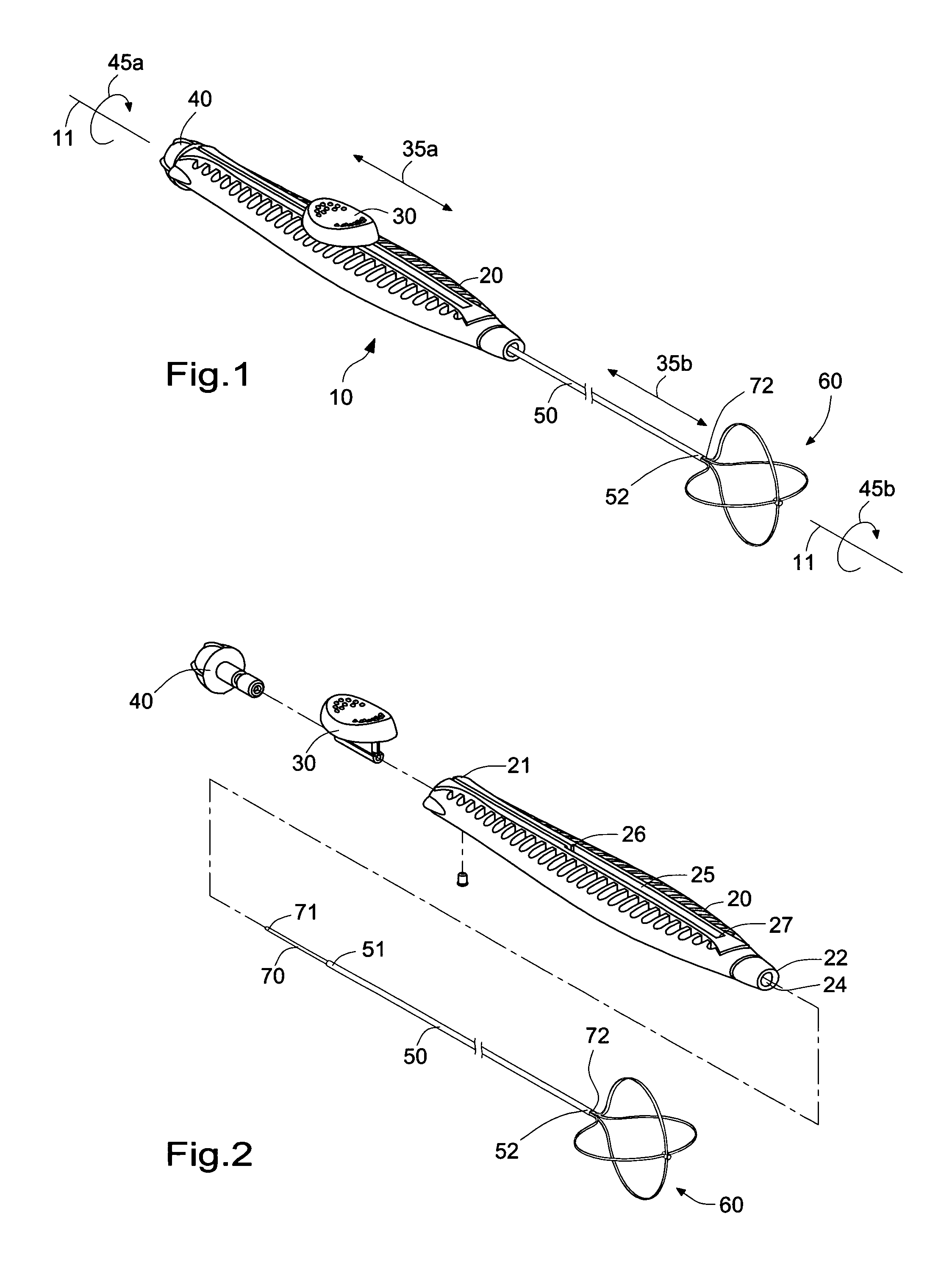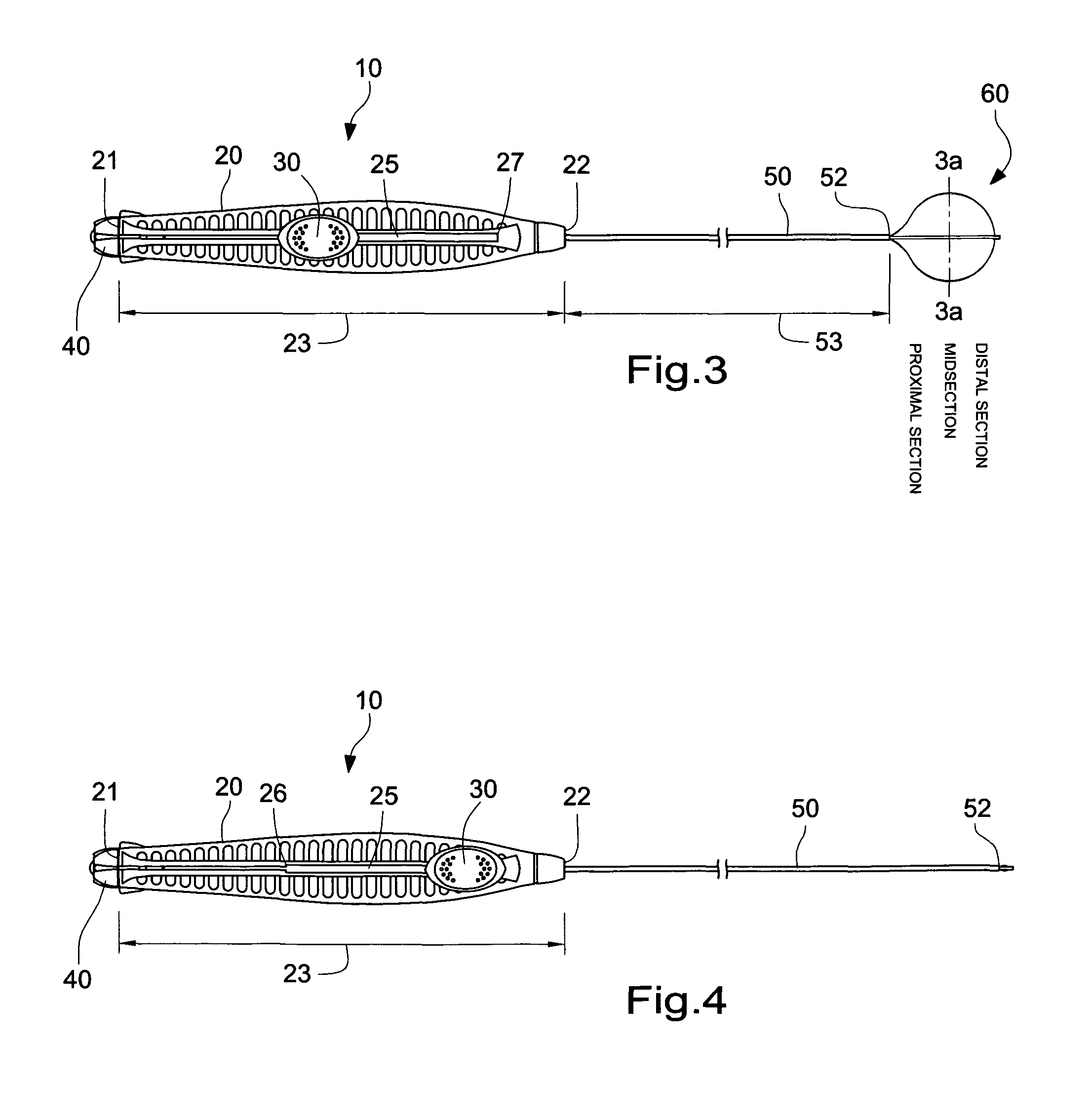Stone retriever for flexible endoscopes having small diameter working channels
a flexible endoscope and working channel technology, applied in the field of medical devices, can solve the problems of extending the tip, reducing the deflection and irrigation of the endoscope, so as to reduce the constriction of the irrigation flow, improve the deflection and irrigation, and improve the effect of deflection and irrigation
- Summary
- Abstract
- Description
- Claims
- Application Information
AI Technical Summary
Benefits of technology
Problems solved by technology
Method used
Image
Examples
Embodiment Construction
[0060]For purposes of describing the present invention, the following terms are specifically defined. A “grasping device” is defined as a filament or non-filament structure in which at least a portion of the structure separates at the distal end when open and comes together at the distal end during closure. Examples of such grasping devices are described in U.S. Patent Publ. Nos. 2002 / 0133170, 2003 / 0105488, 2003 / 0225419, and 2004 / 0215212, and U.S. Pat. Nos. 4,655,219, and 6,280,451, the disclosure of which are expressly incorporated by reference herein.
[0061]A “basket” is defined as a structure comprising multiple filaments that cross over, intersect, or are joined at the distal end when the basket is open. An “extending tip” basket has a distal end that extends significantly beyond the area where the filaments start to blend together. This could prevent a head-on approach to perpendicular tissue. Examples of extending tip baskets are shown in U.S. Patent Publ. No. 2003 / 0078593 and ...
PUM
 Login to View More
Login to View More Abstract
Description
Claims
Application Information
 Login to View More
Login to View More - R&D
- Intellectual Property
- Life Sciences
- Materials
- Tech Scout
- Unparalleled Data Quality
- Higher Quality Content
- 60% Fewer Hallucinations
Browse by: Latest US Patents, China's latest patents, Technical Efficacy Thesaurus, Application Domain, Technology Topic, Popular Technical Reports.
© 2025 PatSnap. All rights reserved.Legal|Privacy policy|Modern Slavery Act Transparency Statement|Sitemap|About US| Contact US: help@patsnap.com



